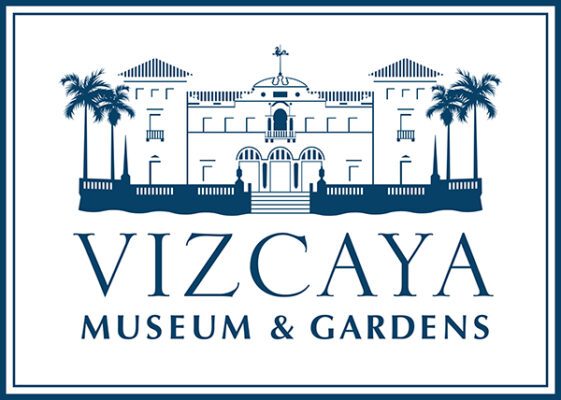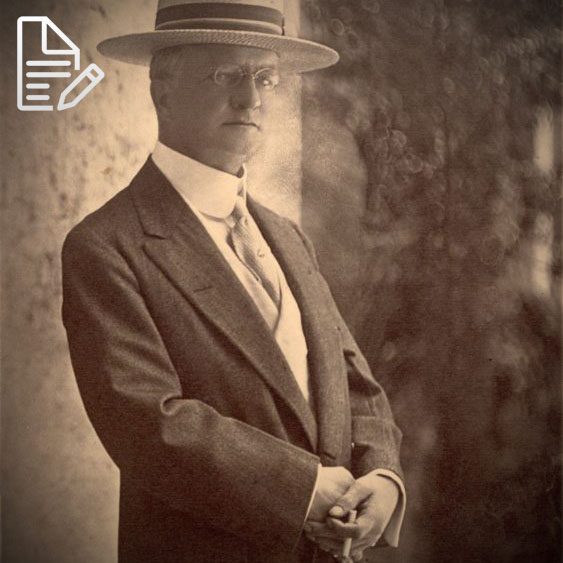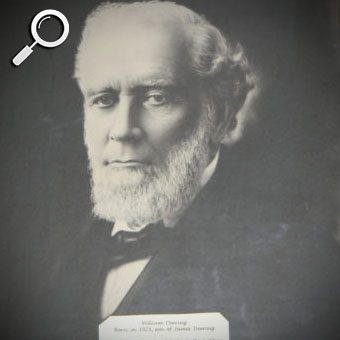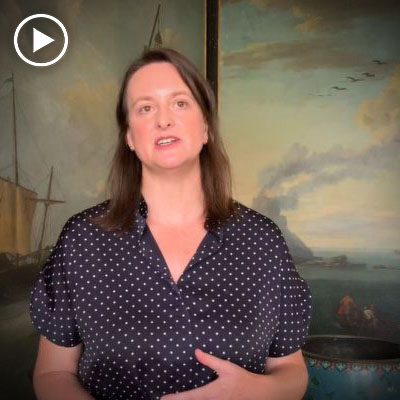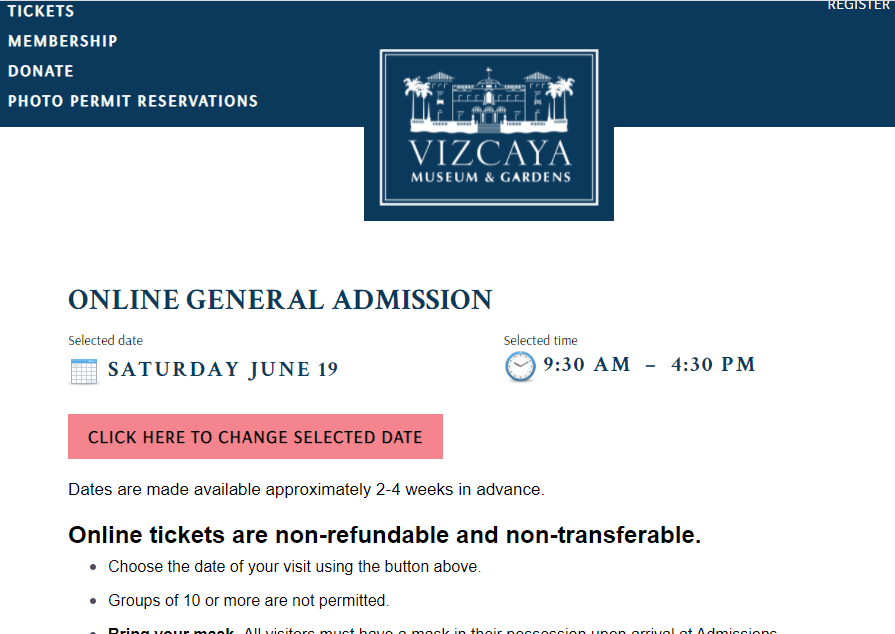James Deering

Twenty times at least we have agreed caravel is emblem of house seahorse is incidental and secondary. Nothing else ever discussed connot understand your forgetting. In any case, think best it should be so. Have ordered making seahorses for arches in forecourt not made for present. Can transfer seahorse weathervane to boathouse. Am writing. Concrete fences like original pink fences cost dollar ninety-four per foot. Everything considered do you not think wise use same fence on new purchases? Have ordered contours made.
JD 5:05p
Paul Chalfin

(1874-1959)
As Artistic Director of Vizcaya, Paul Chalfin was responsible for overseeing all aspects of the design, construction, and furnishing of the estate. He was a graduate of Harvard University and Ecole des Beaux-Arts, Paris and was an artist, architect, and interior designer. Chalfin’s creative vision unites Vizcaya, its furnishings, and the landscape into a cohesive, harmonious whole.
Alexander Stirling Calder

(1870-1945)
American sculptor and teacher, Alexander Stirling Calder, son of sculptor Alexander Milne Calder and father of contemporary artist and sculpture Alexander “Sandy” Calder, is responsible for the stunning sculptures that adorn Vizcaya’s Barge. He trained at the Pennsylvania Academy of Fine Arts, Philadelphia, and in Paris at the Academie Julian and the Ecole des Beaux-Arts.
Fred Starbuck
William Dunn Sturrock

(1891-1931)
William Dunn Sturrock was the first superintendent at Vizcaya. A Scottish immigrant, Sturrock worked at Vizcaya from 1914 to 1917. He was involved in the design of the Superintendent’s House in Vizcaya Village, and he and his family were the first to live there. He was also responsible for much of the planning of the gardens, paths, and farm buildings in the Village.
F. Burrall Hoffman, Jr.

(1882-1980)
F. Burrall Hoffman, Jr. was Vizcaya’s architect. A graduate of Harvard University and the Ecole des Beaux-Arts, Paris, Hoffman began his career as a draftsman with Carrere & Hastings Architects in New York before starting his own firm in 1910. In addition to his architecture work, Hoffman worked on camouflage operations with the U. S. Army Expeditionary Force during World War I and served in the U. S. Navy during World War II.
Diego Suarez

(1888-1974)
Diego Suarez was the landscape architect of Vizcaya. He was born in Bogota, Colombia and studied at the Accademia di Belle Arti in Florence, Italy. Suarez is responsible for the overall design of the Main Garden and Garden Mound. Later, he served as press attache and minister for Chile and was a counselor to the Colombian delegation to the United Nations.
International Harvester

(1888-1974)
Diego Suarez was the landscape architect of Vizcaya. He was born in Bogota, Colombia and studied at the Accademia di Belle Arti in Florence, Italy. Suarez is responsible for the overall design of the Main Garden and Garden Mound. Later, he served as press attache and minister for Chile and was a counselor to the Colombian delegation to the United Nations.
John Singer Sargent

Phineas Paist

(1873-1937)
Phineas Paist was associate architect at Vizcaya, working alongside Paul Chalfin. Born in Pennsylvania, Paist studied at the Pennsylvania Academy of Fine Arts in Philadelphia. In 1902 he received the Cresson Travelling Scholarship which allowed him to study for two years in Paris at atelier Chifflot and atelier Duquesne. Paist moved to Miami about 1918, where he worked closely with George Merrick. His later work includes the Stone House at the Deering Estate, the Venetian Pool in Coral Gables, and the Coral Gables City Hall.
